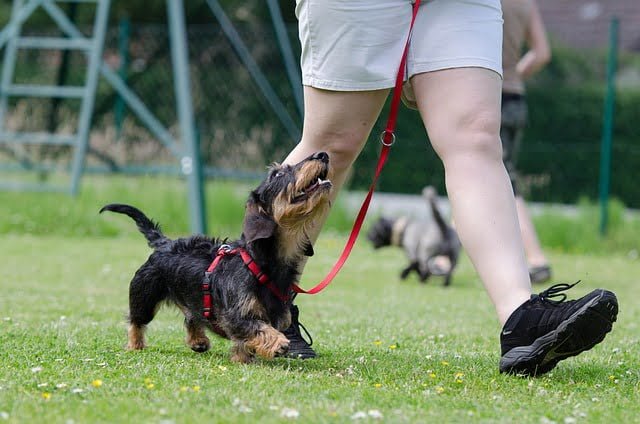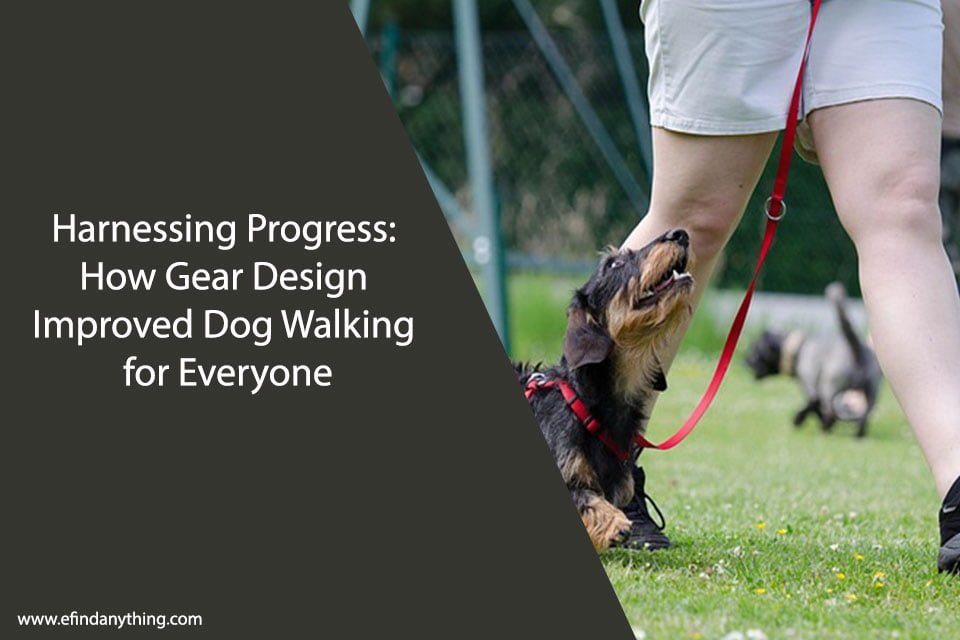
In pet care, selecting the perfect harness is akin to choosing the best safety equipment for a child. A harness is more than just a means to attach a leash; it is an essential tool for communication and training and a source of comfort and security for your dog. As we consider the journey of the dog harness from necessary to sophisticated designs, we note the emphasis on comfort, functionality, and health. The evolution of canine harnesses is mirrored by the changing attitudes towards pet care, recognizing dogs as pets and companions deserving of comfort and respect. A modern dog harness can dramatically improve the walking experience and overall well-being when fitted and used correctly.
The Importance of a Well-Fitted Harness
Understanding the significance of a well-fitted harness is crucial. Harnesses distribute pressure and tension evenly across the dog’s chest and back, reducing strain on the neck, which is particularly important for breeds prone to respiratory issues or tracheal collapse. Moreover, a harness for dogs can provide better control over the dog, making walks more enjoyable and safer for both the dog and the walker. It curtails the likelihood of a dog slipping out and running into potentially hazardous situations. A leash attached to the perfect harness translates to more straightforward cue communication during training.
Different Types of Dog Harnesses
The marketplace offers various dog harness types, each designed with a particular purpose. Step-in harnesses are known for their simplicity and are ideal for well-behaved dogs who don’t pull. Vest harnesses often come with padding for additional comfort and are suitable for small breeds or dogs with sensitive skin. No-pull harnesses are engineered to discourage pulling without causing pain, featuring front leash attachments that gently steer the dog back towards the owner when they try to pull ahead. Spotting the perfect harness means recognizing the unique needs of your four-legged friend and choosing a type that complements their behavior and lifestyle.
Features to Look For in a High-Quality Dog Harness
Multiple features should guide your decision when you’re in the market for a harness. Adjustable straps are a must for a snug and comfortable fit, allowing room for your dog to move without the harness being too loose or too tight. Breathable fabrics are essential to keep your dog cool, especially during vigorous exercise or warm weather. Reflective stitching or panels ensure visibility during night walks, a safety feature that could prove life-saving. A handle on the back of the harness can also help manage your dog in crowded places or assist them over obstacles.
Understanding Dog Behavior and Harness Training
Proper harness training is essential for pleasant walks and your dog’s overall education. Introducing a harness should be a gradual and positive experience. Experts recommend using a step-by-step approach, allowing the dog to sniff and get used to the harness before putting it on. Once on, positive reinforcement through treats and affection helps to build a positive association. It’s essential to ensure the harness is a source of positive experiences rather than something your dog dreads. Regular training with a harness can help your dog associate it with fun times like walks, playtime, or a trip to their favorite park.
Measuring Your Dog for the Perfect Harness Fit
Measuring your dog for a harness is a step often overlooked, yet it is the bedrock of ensuring efficiency and comfort. A loosely fitted harness can lead to escape, while too tight could cause chafing and discomfort. To ensure the perfect fit, you need to measure your dog’s girth, which is the widest part around the ribcage, and the lower neck to avoid any risk of choking. Always follow the manufacturer’s sizing guide, and if in doubt, aim for the larger size, as most harnesses are adjustable.
Safety Considerations When Using a Dog Harness
With the well-being of your canine friend in mind, safety should never be compromised. Always inspect the harness before each use, checking for signs of wear, such as torn straps or broken buckles. It’s also crucial to secure the harness correctly, with all straps fitted snugly to prevent your dog from slipping out. Regular monitoring will allow you to spot any potential issues with the harness that could compromise your dog’s safety.
The Role of Material and Craftsmanship in Harness Durability
The durability of a dog harness largely depends on the materials used and the quality of the craftsmanship. Nylon is famous for its resilience and easy maintenance, while leather offers a classic look and durable structure, although it requires more care. The construction should be robust, with double-stitching and solid fastenings. The materials should also be non-irritating and non-toxic, ensuring your dog’s health is not at risk. A well-crafted harness is an investment into your dog’s comfort and safety, proving economical in the long run.
When to Replace a Dog Harness
A good rule of thumb is to replace a dog harness when it shows signs of significant wear or doesn’t function as it should. Frayed straps, faded colors, and difficulty adjusting the fit are tell-tale signs that a harness has reached the end of its journey. A reliable harness should retain its shape and not stretch out over time, which can impair its effectiveness. Identifying these signs will help you determine when to replace your dog’s gear, ensuring their safety and comfort during outings.
Harnesses and Dog Health
While we might view a harness through the lens of convenience, we must remember its impact on a dog’s health. Well-designed harnesses can alleviate pressure from a dog’s trachea, mitigating the risk of injury and supporting older dogs with joint issues. Specialized harnesses even cater to dogs recovering from surgery or suffering from mobility problems by evenly distributing weight and providing lifting support. Harness selection thus becomes a pivotal decision for your pet’s long-term health and happiness.
Conclusion
The development of dog harnesses reflects our growing appreciation for our furry friends. They prioritize safety, comfort, and health in their everyday lives. When chosen, fitted, and maintained with care, a harness becomes more than just an accessory; it is essential for strengthening the bond between dogs and their owners.





